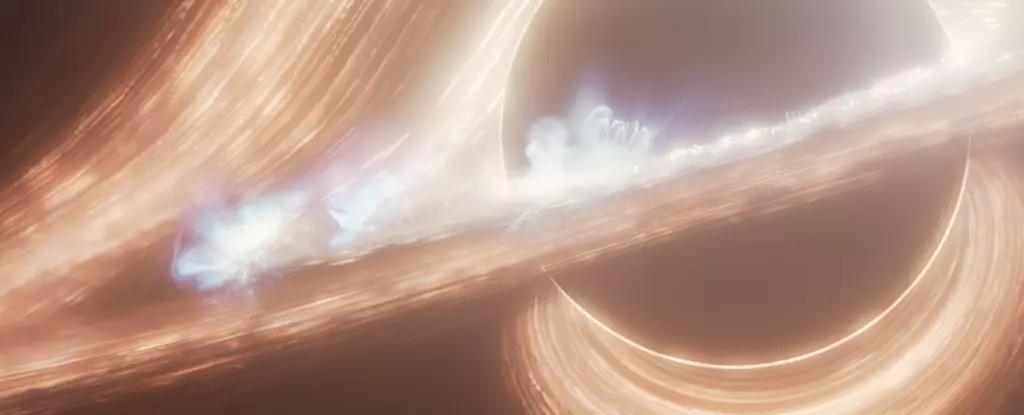At the heart of the Milky Way lies a supermassive black hole, known as Sagittarius A* (Sgr A*), a gravitational giant that wields immense influence over its surroundings. Recent observations using NASA’s James Webb Space Telescope (JWST) have shed new light on this enigmatic entity, revealing an active environment teeming with dynamic activity. Unlike the ravenous black holes observed in distant galaxies, Sgr A* proves to be a more temperate counterpart, yet its immediate area is far from quiet, as new data indicates a spectacle of cosmic flares erupting from its accretion disk.
Distinguishing Fireworks: Flare Patterns and Their Implications
The JWST’s Near-Infrared Camera (NIRCam) has provided a remarkable glimpse into the activities surrounding Sgr A*. Over the course of 48 hours, segmented into numerous observational sessions, astronomers documented a startling frequency of flaring events. Reports suggest that Sgr A* generates approximately five to six significant flares each day, complemented by numerous smaller bursts. This frenetic activity paints a vibrant picture of energetic interplay between gravitational forces and hot, ionized gas swirling around the black hole.
Farhad Yusef-Zadeh, a leading researcher on the study from Northwestern University, expressed excitement over the chaotic and seemingly random nature of the activity. In a universe where patterns often govern celestial phenomena, the unpredictable flaring behavior emulating from Sgr A* invites fresh questions regarding the mechanics at play within the accretion disk. Such findings challenge astronomers to reconsider their understanding of black holes, especially those that might appear more subdued in their feeding habits.
The phenomena observed by the JWST has prompted speculation regarding the processes generating Sgr A*’s flickering luminosity. Researchers have proposed two potential mechanisms responsible for the variation in flare brightness and frequency. Smaller flares may arise from turbulence within the accretion disk as hot, magnetized gas experiences compressional forces, similar to solar flares erupting from our Sun’s magnetic field. This comparative analogy elucidates the violent interactions occurring within the extreme environment surrounding a black hole.
In contrast, the larger bursts observed could be attributed to a phenomenon known as magnetic reconnection—an event triggered when opposing magnetic fields converge. This collision results in ejections of high-velocity particles, unleashed at astonishing speeds, reminiscent of static electricity discharges. Such dynamics reveal the fundamentally energetic nature of black holes and the intricate interplay of forces that elicit spectacular displays in their vicinity.
Perhaps one of the most intriguing revelations from the JWST data concerns the time delay observed between the different wavelengths of light emitted during the flaring events. The shorter wavelengths exhibited brightness changes just slightly ahead of the longer wavelengths, creating a temporal gap of mere seconds to 40 seconds. This finding is unprecedented in the observation of black hole activity and may provide invaluable clues about the physical processes within the turbulent accretion disk.
The implications of these observations hint at the underlying mechanics governing particle behavior in the presence of intense magnetic fields. For instance, particles often lose energy more swiftly at shorter wavelengths, which could suggest a systematic interaction with the magnetic confines surrounding the black hole.
Future Directions: A Deeper Exploration
As the excitement builds around Sgr A* and its flaring activity, researchers anticipate extending their observational time with the JWST to delve deeper into these cosmic phenomena. With longer observation durations, scientists aim to reduce the noise potentially clouding their findings, allowing for a clearer picture of the dynamics at play within our galaxy’s central region.
Yusef-Zadeh mentions the necessity of competing against observational noise, especially given the intricacies of the flaring events. A full 24-hour observation would serve to illuminate features previously obscured, augmenting our understanding of this supermassive black hole and its vibrant, chaotic environment. At the intersection of curiosity and cosmic discovery, the saga of Sagittarius A* unfolds, revealing the intricate ballet of forces in one of the universe’s most captivating locales.


Leave a Reply